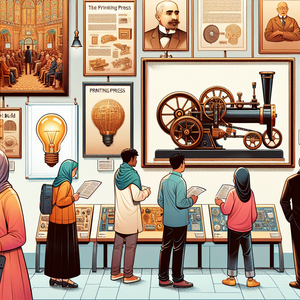The Last Cashier Standing: A Symbol of Humanity in an Automated World

For decades, cashiers have been the friendly face of commerce, facilitating transactions and providing assistance to countless customers. However, technological advancements have rapidly reshaped this once-ubiquitous role. Self-checkout kiosks, touchscreen ordering systems, and "just walk out" technologies have redefined consumer interactions. While these innovations prioritize speed and efficiency, they raise questions about the future role of human cashiers and their irreplaceable qualities.
The Role of the Last Cashier
In a future dominated by automation, the last cashier exists not out of necessity but choice. Representing more than a transactional role, they embody human connection, offering empathy, adaptability, and emotional intelligence. Their presence enriches the customer experience in ways machines cannot replicate, providing a human touch that transcends functionality.
The Irreplaceable Qualities of Humans
Empathy and emotional intelligence allow cashiers to connect with customers on a deeper level, offering comfort and understanding. Adaptability enables them to handle unpredictable scenarios, such as technical glitches or emergencies. Beyond practicality, they symbolize cultural significance, representing authenticity and the value of face-to-face interactions in a digital world.
The Broader Implications: Accessibility and Inclusivity
The persistence of human cashiers highlights issues of accessibility and inclusivity. Not everyone can navigate automated systems, making human cashiers essential for older adults, people with disabilities, and those who prefer personal interactions. Their presence offers a choice, ensuring technology enhances rather than erases human experiences.
The Symbolism of Resistance
The last cashier standing symbolizes resistance against the relentless march of automation. They challenge society to consider the trade-offs of prioritizing convenience over meaningful human interactions. This idea could inspire movements like "human commerce," emphasizing the value of in-person connections and balancing technological progress with humanity.
The story of the last cashier standing reflects the societal choices we face as automation reshapes the workforce. While machines offer efficiency, they cannot replicate the empathy and adaptability of human interactions. The last cashier challenges us to prioritize connection and inclusivity, embodying the enduring importance of humanity in an automated age.
Human-Centered AI Ethicist
Tech giants like Google, Microsoft, and IBM, as well as think tanks and academic institutions
Core Responsibilities
Develop ethical frameworks to guide the design and implementation of AI systems, ensuring they prioritize human well-being and inclusivity.
Analyze potential societal impacts of emerging technologies, such as automated retail systems, and advocate for responsible innovation.
Collaborate with engineers, policymakers, and business leaders to integrate ethical considerations into AI development.
Required Skills
Strong background in philosophy, ethics, or social sciences, with knowledge of AI technologies.
Exceptional analytical and communication skills to navigate complex moral dilemmas and advocate for human-centered design.
Retail Technology Integration Specialist
Retail consulting firms, technology vendors, and large retail chains like Walmart or Target
Core Responsibilities
Assist retail businesses in adopting and integrating automated solutions, such as self-checkout kiosks or AI-powered inventory systems.
Train employees to work alongside new technologies, emphasizing adaptability and troubleshooting skills.
Ensure installed systems enhance customer experience while maintaining accessibility for diverse populations.
Required Skills
Technical expertise in retail automation tools (e.g., NCR, Amazon Go systems).
Strong project management and change management skills to lead seamless transitions.
Customer Experience Designer (CX Designer)
Retailers like Nordstrom or Sephora, customer experience firms, or companies focused on digital transformation
Core Responsibilities
Design and optimize customer journeys that blend automated processes with meaningful human interactions.
Conduct user research to understand pain points in automated systems and develop strategies to address them.
Prototype and implement human-centric service solutions, such as hybrid cashier experiences or AI-assisted human support.
Required Skills
Proficiency in UX/UI design tools and methodologies, with a focus on service design.
Empathy-driven mindset, paired with data analytics and customer behavior insights.
Automation Accessibility Consultant
Accessibility consulting firms, government agencies, and large corporations like Apple or Amazon
Core Responsibilities
Evaluate automated systems (e.g., self-checkouts, mobile ordering apps) for accessibility, ensuring they cater to individuals with disabilities and older adults.
Develop guidelines and best practices for creating inclusive technology that bridges the digital divide.
Advocate for universal design principles in product development and business practices.
Required Skills
Expertise in accessibility standards (e.g., WCAG, ADA compliance).
Experience working with diverse populations and understanding their unique needs in tech-enabled environments.
Workforce Transition Strategist
Consulting firms like Deloitte or McKinsey, labor advocacy organizations, and HR departments in large corporations
Core Responsibilities
Help organizations navigate the shift toward automation by designing workforce transition plans that prioritize employee retention and reskilling.
Identify roles that can be augmented, not replaced, by technology, and develop training programs to align workers with future needs.
Advocate for ethical workforce policies that balance automation with human employment opportunities.
Required Skills
Background in organizational development, HR strategy, or labor economics.
Strong interpersonal and analytical skills to address workforce challenges with empathy and foresight.


